Introduction
Located in the South Pacific and comprising a group of islands and islets, the Republic of Fiji covers approximately 18,274 square kilometres. It is bordered by New Zeeland to the southeast, Vanuatu to the west, New Caledonia to the southwest and Tonga to the east. The Samoas, France’s Wallis and Futuna to the north east and Tuvalu to the north make up the Republic’s closet neighbours. Of its close to 900,000 population, 87% inhabit the two major islands, Viti Levu and Vanus Levu. The capital city, Suva, sits on the coast line of Viti Levu. Ethnic Fijians at about 57.3% of the population, followed by Indo-Fijian at an estimated 37.6% predominantly make up the majority of the population. For various reasons the population of Indo-Fijians has declined significantly. Christianity, Hindu, and Muslim constitute the three largest practiced religions in the Republic. Due to the abundance of fish, forest and minerals, Fiji has one of the more developed economies of the Pacific Island realm. Fiji’s economy depends heavily on the tourist industry and sugar exports.
Snapshot: Fiji's Constitution making
Constitutional history
Key Country Documents Index
Since gaining independence from Britain which colonized it since 1789, in 1970, Fiji has had three constitutions – interspersed with periods of military or interim government rule. The constitution instituted in 1970, negotiated with the British, did not vary much from the Colonial Constitution of 1966. This Constitution was a product of the decolonization process that characterized this decade as Britain sought to give colonies more independence. During the 1960s Fijians were given a greater role in the administration of the island. In 1965 a constitutional conference held in London sought to pave the way for Fijians to take control of their own government and negotiate a deal between the two major ethnic groups. The resulting document expanded the franchise, previously exercised only by Europeans and selected Indians and ethnic-Fijians who had up to that point been represented by chiefs. Land rights guaranteed by the Deed of Cession were given constitutional protection. Fijian chiefs were given an effective veto in all important matters affecting the status of Fijians and in changes to the Constitution itself. Voters were classified according to ethnicity: Fijian, Indian, or General, which included citizens of any non-Fijian, non-Indian ethnicity. Legislative representatives were elected from the Indo and Fijian rolls. The Constitution gave power to Fijian politicians so long as they remained in partnership with the general voters and, critically, so long as the Fijian vote remained unified. Like the Constitution of 1966, the Independence Constitution had a bicameral legislature. The House of representative was elected by ethnic roll call and the Senate was appointed. The House had a membership of 52. With respect to the composition of the Senate, seven members were appointed by the Prime Minister, six by the leader of the opposition, eight by the Great Council of Chiefs (a purely Fijian body), and one by the Council of Rotuma. The appointment procedure into the Senate meant that ethnic-Fijians would almost be guaranteed a majority. A parliamentary system was established; with a Governor-General representing the Queen of England as Head of State.
Constitutional crises
Fiji faced its first constitutional crisis in 1977, when the Indo-Fijian dominated National Federation Party (NFP) narrowly won the parliamentary elections. Ethnic Fijian Governor General Ratu Sir George Cakobau called on Ratu Sir Kamisese Mara's Fijian Alliance to form a caretaker government, pending new elections scheduled for September of that year. Splits within the NFP and its hesitation to take office also exasperated the situation. In September, Mara’s Alliance Party won and took control of the government.
Fiji’s second constitutional crisis and first two coups came in 1987. The two coups resulted from ethnic Fijian concerns that Indo-Fijians dominated the government. Lieutenant Colonel Sitiveni Rabuka led the two 1987 coups. The first coup, in May 1987, disposed the Timoci Bavadra led government. In October of that same year, Fiji’s second coup rejected Queen Elizabeth II as the Head of State of Fiji. Fiji’s long formed name changed from the Dominion of Fiji to the Republic of Fiji. The military coup caused the exodus of thousands of Indo-Fijians, who faced ethnic discrimination at the hand of the government. In 1990 the interim government promulgated a new Constitution which sought to strengthen ethnic Fijian control of the country. Under this Constitution the positions of President and Prime Minister could only be filled by ethnic Fijians. Thirty-seven of the seventy parliamentary seats could only be filled by ethnic Fijian. This meant that ethnic Fijians retained a majority of seats in parliament. The constitution abolished all forms of non-racial voting. In 1992 Rabuka became Prime Minister under the 1990 Constitution. However, he could only do so with the aide of the Indo-Fijian dominated Fiji Labor Party (FLP) and later the NFP. FLP and NFP exacted from Rabuka a speedy constitutional review, which the 1990 constitution mandated.
In 1995 Rabuka established the Constitutional Reviewed Commission. The review process resulted in Fiji's third and current constitution, the 1997 Constitution. The Constitution sought to balance ethnic representation in Fiji's government. It led to the election of Fiji's first Indo-Fijian Prime Minster, Mahendra Chaudhry, in 1999. However, Fiji experienced another coup on the anniversary of the election of Chaudhry's People Coalition government. Led by George Speight, rebels took control of parliament on 19 May 2000. They held Chaudhry, other ministers, and staff hostage for fifty-six days. President Ratu Sir Kamisese Mara denounced the coup, but dismissed the government. Mara sought to take executive control for himself and declared a state of emergency. Like in 1987, the rebels claimed fears of an Indo-Fijian dominated government. On 29 May 2000 President Mara left office, questions remain as to whether he was deposed or resigned. The military led by Commodore Vorege (Frank) Bainimarama assumed control and abrogated the Constitution. With the backing of the Great Council of Chiefs, the military installed an interim government headed by Laisenia Qarase. Ethnic Fijians dominated this new interim government. The 2001 elections produced no clear majority but Qarase was appointed as Prime Minister. The Supreme Court declared Qarase's government unconstitutional in 2003.
The following year saw Vice President Ratu Jope Seniloli and four other prominent figures convicted for their part in the 2000 coup. In 2005 Qarase supported a bill granting amnesty to perpetrators of the 2000 coup, the Reconciliation Tolerance and Unity Bill. This moved further strained the already tense relationship between the government and the military. In late 2006 Bainimarama handed down a list of demands to Qarase with a deadline set for December 4. The demands focused mainly on the removal of three bills dealing with the 2000 coup and land rights. His demands also included the resignation or removal of Fiji Police Commissioner Andrew Hughes and the dropping of police investigations into whether his threats were seditious. Bainimarama wanted Qarase to remove other senior government officials whom he felt had connection with the 2000 coup. The government promised to make certain concessions, but the military remained suspicious and felt that the promised concessions were not enough. The military then called for Qarase's resignation. On December 5 the President signed legal papers dissolving the government out of necessity. On December 6, 2006 Bainimarama announced that the military had officially taken over the government. In 2009, the Court of Appeals ruled the 2006 coup illegal sparking another constitutional crisis. President Ratu Josefa Iloilo abrogated the constitution, dismissing all office holders under the Constitution. These included judges and the governor of the Central Bank. He then appointed Bainimarama as Prime Minister and imposed Public Emergency Regulation. Epeli Nailatikau replaced Iloilo as President in 2009. Bainimarama lifted the Public Emergency Regulation in 2010. Bainimarama also announced nationwide consultation for a constitution building process.
New constitutional developments and challenges
In 2013, Fiji adopted a new Constitution, marking the end to a two year controversial constitution making process which the government perceived as part of the long term solution to Fiji’s protracted political crises and instability. Prime Minister Bainimaramara described the country’s recent history as “a vicious pattern [of] elections followed by ineffective governance, followed by coup, followed by elections and then another coup, with the cycle continuing and Fiji’s overall situation regressing further and deeper.”
After several previous attempts, a draft constitution was released to the public of Fiji for comment in March 2013. After considering public comment, the 2013 Constitution was given assent by the President 6 September 2013 and called for elections by 30 September 2014. In response to public comment, the new constitution strengthens protection of certain communally owed lands, increases property rights, creates a single constituency, and establishes a Parliamentary system.
The 2013 Constitution purports to address some of the greatest challenges of the past. For example, the document finally addresses the deep ethnic divide in Fiji. Each voter has one vote of equal value, and votes are cast for political parties and independent candidates, who are given seats in Parliament based upon the proportion of the vote rather than on ethnicity. Further, the Constitution places no restrictions on the ethnicity of persons wishing to hold political positions.
However, the document continues to face criticism. Chapter 10, for instance, grants immunity to government officials, including the President, police force, and judiciary, for any involvement in the government following the 2006 coup. Critics also fear that the creation of a single, national constituency will favor larger political parties and that the built-in rigidity of the Constitution may allow laws passed by the current government to remain in effect.
The 2013 Constitution
The Executive
The President heads the executive as Head of State and Commander In Chief of the military. He/she is presented with any Bill passed by Parliament for assent and is given 7 days to reject the Bill or it will take the force of law. In order to qualify for nomination to the office of President, a person must have a distinguished career in any aspect of national or international life, hold only a Fijian citizenship, cannot be a member or office-holder in any political party, nor can he/she be a candidate for another office. The nominee must also have a clear criminal record for the 6 years preceding the nomination. Upon vacancy of the office of the President, the Prime Minister and the Leader of the Opposition each nominate one name, which are then presented to the Speaker to put on the floor of Parliament for a vote. The President may serve up to two three-year terms. The President may resign his/her position. Alternatively, the Prime Minister may initiate investigation proceedings should the question arise as to the President´s ability to perform the functions of office or as to misbehavior. Upon the request of the Prime Minister, the Chief Justice is to establish a tribunal or medical board, upon whose advice Parliament must rely when determining whether to remove the President from office.
The Constitution also establishes a Prime Minister as the head of government and chairperson of the Cabinet. The Prime Minister is the leader of the political party that wins more than 50% of the total number of Parliamentary seats and is responsible for keeping the President generally informed about the issues relating to the governance of Fiji. The Prime Minister may resign from office or may be removed by a vote of no confidence in Parliament. The Prime Minister selects the Ministers of the Cabinet, all of whom are accountable to Parliament. The only Constitutionally-mandated Cabinet Minister is the position of the Attorney-General. The Attorney-General is appointed by the Prime Minister and is the chief legal adviser to the Government. The Attorney-General must have at least 15 years of experience as a legal practitioner and cannot have been found guilty in any disciplinary proceeding.
The Legislature
Parliament makes up Fiji’s legislative branch of government, vested with the power to make laws for the State. Any member of Parliament may introduce a Bill, with the exception of Money Bills, which may only be introduced by a Cabinet Minister so vested with such authority. Parliament must approve any international treaty or convention by which the State would be bound. Members of Parliament are elected by a multi-member system of proportional representation. A political party or independent candidate must receive at least 5% of the total number of votes in order to receive a seat in Parliament. Parliamentary candidates may be nominated by a registered political party or as an independent candidate. The first general election under the 2013 Constitution will yield a Parliament consisting of 50 members, and future elections will maintain the ratio of members to population as represented in the first election. Unless Parliament is dissolved—by the President on advice of the Prime Minister or by Parliamentary resolution—Members of Parliament serve 4 year terms.
The Judiciary
The judiciary of Fiji consists of the Supreme Court, the Court of Appeal, the High Court, the Magistrates Court, and such other courts as created by law. The Supreme Court sits at the top of the judicial hierarchy as the final court of appeals and has original jurisdiction to hear and determine constitutional issues. It is headed by the Chief Justice as President of the Supreme Court. The Court of Appeal consists of a Judge appointed as the President of the Court of Appeal and other Justices of Appeal. The Court of Appeal determines appeals from the final judgment of the High Court regarding the Constitution and its interpretation or other judgments as prescribed by law. The High Court Consists of the Chief Justice, other Judges of the High Court, Masters of the High Court, and the Chief Registrar of the High Court. The High Court has unlimited original jurisdiction over any civil or criminal proceedings and original jurisdiction over matters arising under the Constitution and its interpretation. The High Court may hear appeals from lower courts. The Magistrates Court consists of the Chief Magistrate and other Magistrates appointed by the Judicial Services Commission. The authority and jurisdiction of the Magistrates Court and other courts is conferred by written law.
System of Government under the 2013 Constitution
Timeline
| 1643 | Dutch explorer, Abel Tasman arrives on the Island |
| 1774 | Captain James Cook sails close to the Island |
| 1789 | Captain William Bligh, after the Mutiny on the Bounty, sailed through the Fiji group |
| 1830 | Christian missionaries begin to arrive on the islands |
| 1854 | Seru Cakobau assumed the title of Vunivalu and styles himself as Tui Viti. He becomes a Christian. |
| 1870 | The Levuka Charter was ratified by Seru Cakobau, allowing settlers to set up local governments |
| 1871 | European settlers at Levuka island organize a national government and name Cakobau king of Fiji following local disorder |
| September 28, 1874 | Fiji becomes a British colony following agreement with Council of Chiefs. |
| May 14, 1879 | First group of indenture laborers from India arrive. |
| 1904 | Legislative Council, consisting of elected Europeans and nominated Fijians, set up to advise the British Governor. |
| 1916 | British governor in India stops recruitment of indenture laborers |
| 1920 | Termination of importation of indenture laborer to Fiji |
| October 10, 1970 | Fiji's first Prime Minister Ratu Sir Kamisese Mara receives the instruments of Independence by HRH Prince of Wales, Prince Charles. |
| 1972 | Fiji first general election under the 1970 constitution |
| May 14, 1987 | Lieutenant Colonel, Sitiveni Rabuka of the Royal Fiji Military Forces executed a bloodless military coup. |
| October 1987 | Second coup, Fiji is declared a Republic and servers ties with Britain. |
| 1990 | New constitution enshrining ethnic Fijians dominance. |
| 1992 | Rabuka, of the Fijian Political Party (FPP), becomes Prime Minister following general elections. |
| 1995 | Constitutional Review Commission appointed. |
| July 25, 1997 | New constitution becomes law. |
| 1997 | Fiji is readmitted into the commonwealth. |
| 1999 | Mahendra Chaudhry, an ethnic Indian, becomes prime minister after the Fiji Labour Party emerges from the general election with enough seats to rule on its own. |
| May 2000 | Led by George Speight, rebels take over Parliament taking Chaudhry and his government as hostages. |
| July 2000 | Chaudhry and other hostages released; Great Council of Chiefs appoints Ratu Josefa Iloilo president. |
| August 2001 | New Elections held to restore democracy. |
| September 2001 | Indigenous Prime Minister Laisenia Qarase sworn in, but doesn't offer cabinet posts to opposition Labour Party, in defiance of constitution. |
| July 2003 | Supreme Court rules that Qarase must include members of the opposition in his cabinet. |
| July 2005 | Military chief warns that he will remove government if proposed amnesty for those involved in 2000 coup goes ahead. |
| October – November 2006 | Tensions rise between PM Laesenia Qarase and military chief Frank Bainimarama, who threatens to oust the government after it tries, and fails, to replace him. Mr Qarase goes into hiding as the crisis escalates. |
| December 2006 | Mr Bainimarama says in a televised address he has taken executive powers and dismissed PM Laisenia Qarase. Commonwealth suspends Fiji because of the coup. |
| April 2007 | Bainimarama sacks the Great Council of Chiefs and suspends all future meetings, after the chiefs refuse to endorse his government and his nomination for vice president. |
| July 2008 | Bainimarama postpones elections promised for early 2009, on the grounds that electoral reforms could not be completed in time. |
| April 2009 | Appeal Court rules the military regime was illegally appointed after the 2006 coup and says a caretaker Prime Minister should be appointed to call elections to restore democracy. |
| April 2009 | President Iloilo repeals the constitution, appoints himself head of state, sets a 2014 election deadline and sacks all the judges. He then reappoints military chief Frank Bainimarama as Interim Prime Minister. Martial law is imposed. |
| July 2009 | Bainimarama unveils plans for a new constitution by 2013, ahead of elections in 2014. He says that under the proposed changes, the ethnic-based system introduced in 1997 will be scrapped. |
| January 2012 | Bainimarama announces lifting of martial law and says that consultations on a new constitution will begin in February. |
| December 2012 | Constitution Commission produces draft constitution intended to pave way for return to democracy with free elections in 2014. |
| January 10, 2013 | Government rejects the Constitution Commissio's Draft. |
| March 2013 | Government releases its own constitution draft for public comment. |
| 6 September 2013 | President Ratu Epeli Nailatikau formally assents to new constitution |
Bibliography
1997 Fiji Constitution. (available at: http://www.wipo.int/wipolex/en/text.jsp?file_id=184423).
2013 Fiji Constitution. (available at: http://www.electionsfiji.gov.fj/wp-content/uploads/2013/09/Constitution-of-the-Republic-of-Fiji-.pdf).
Australia Network News. Constitutional Expert Yash Ghai Says He Doubts if Fiji PM Frank Bainimarama Has Read Constitution. Web. 23 Oct. 2013. http://www.abc.net.au/news/2013-10-23/an-constitution-expert-yash-ghai-says-he-doubts-if-fiji-pm-has-/5039704.
BBC News. Background on Fiji's Four Coups. 12/08/2006. Web. 2013 June 12.http://allafrica.com/stories/200406250863.html
BBC News. Fiji Country Profile. 2013. Web. 12 June 2013.http://www.bbc.co.uk/news/world-asia-pacific-14919688.
Constitution Commission. Constitutional History of Fiji. 2013. Web. 2013 June 12. http://constitution.org.fj/?page_id=47.
Citizen's Constitutional Forum. Analysis: 2013 Fiji Government Draft Constitution. 2013. Web.12 June 2013 http://fijiconstitution.weebly.com/uploads/1/2/4/6/12466522/v2.2013_gdc_analysis.ccf_report.pdf.
Fiji Government. Our Country. 2013. Web. 2013 June 12. http://www.fiji.gov.fj/index.php?option=com_content&view=article&id=645&Itemid=196#t11.
Fiji High Cominsion to the UK. About Fiji. 2013. Web. 2013 June 12. http://www.fijihighcommission.org.uk/about_1.html.
Fraenkel, Jon, The Origins of Military Autonomy in Fiji: A Tale of Three Coups, 67 Austrialian Journal of International Affairs 327 (2013) (available at http://www.tandfonline.com.proxy.wm.edu/doi/full/10.1080/10357718.2013.788125).
InfoPlease. Fiji, 2013. Web. 2013 June 12. http://www.infoplease.com/country/fiji.html.
International IDEA. The Role of Constitution-Building Processes in Democratization. 2013. Web. 12 June 2013. http://www.idea.int/cbp/upload/CBP-Fiji.pdf.
International Senior Lawyers Project, Analysis of the Draft Constitution of Fiji Released by the Interim Government of Fiji on 21March 2013. 2013. Web. 12 June 2013. http://www.islp.org/sites/default/files/Analysis%20of%20the%20Draft%20Constitution%20for%20Fiji.pdf.
United States. CIA World Factbook: Fiji. 2013. Web. 12 June 2013. https://www.cia.gov/library/publications/the-world-factbook/geos/fj.html.
| Branch | Hierarchy | Appointment | Powers | Removal |
|---|
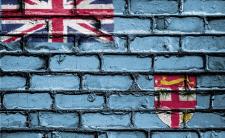
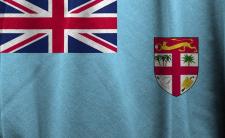
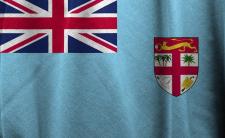
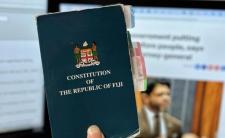
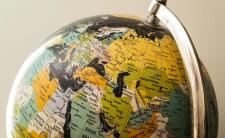
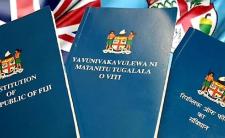
Share this article